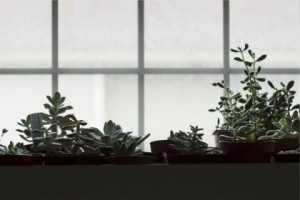A Few Gardening Tips to Help You Protect Warmth-Loving Plants During Winter
 If you live in a northern region, your love of growing tropical island beauty could be more challenging than your southern neighbors’ who are surrounded by crepe myrtle, hibiscus and bougainvillea nearly year-round. The reality of long, dark winters may have made you assume that lush tropicals were impossible to enjoy where you live, outside of occasional visits to the official botanical gardens in your area. Not so. While northerners can’t safeguard all tropicals through the winter, there are ways to help protect warmth-loving plants during winter. If you’d like to give it a try here are a few gardening tips to follow.
If you live in a northern region, your love of growing tropical island beauty could be more challenging than your southern neighbors’ who are surrounded by crepe myrtle, hibiscus and bougainvillea nearly year-round. The reality of long, dark winters may have made you assume that lush tropicals were impossible to enjoy where you live, outside of occasional visits to the official botanical gardens in your area. Not so. While northerners can’t safeguard all tropicals through the winter, there are ways to help protect warmth-loving plants during winter. If you’d like to give it a try here are a few gardening tips to follow.
Location, Location, Location
One of the most important aspects of real estate is likewise true for your garden plants. It’s all about location. If you want to grow a sun-soaking tropical you need to be sure that you have that kind of spot in your garden. Your plant’s home away from home should be able to replicate bright unabated sunshine at least for several months of the year.
Another location fact you need to consider is what that spot is like during winter. If your sunniest spot is out in the middle of your yard, unprotected from the elements, then surviving the winter will be dodgy. On the other hand, if you have a sunny spot that is also sheltered either by your home or by dense shrubbery, your tropical will benefit. Gardening tips from those who’ve successfully nurtured tropicals in non-tropical conditions always include the need for shelter.
Inside or Outside That is the Question
One of the simplest solution to growing jungle or island plants is to do it in large pots which can be moved indoors during winter. Several pots of lush tropicals can provide a great effect in the garden and doesn’t leave plants at the mercy of Jack Frost during the winter as they can be moved indoors. If you do plant outdoors, be prepared to do all you can to bundle up your beauty. Deep layers of mulch will blanket the roots while swaths of burlap will be needed to wrap the plant itself. Outdoor plantings will benefit greatly from ultra-rich soil. The healthier the plant at the outset, the greater its chances of surviving extreme conditions.
A final tip for lovers of hot climate plants is to always identify them with legible garden markers. Your plants are foreigners and they deserve polite introduction to visitors. Give it to them with Kincaid Plant Markers. Kincaid offers markers in a variety of price points – but all are high-quality markers that will stand up to many years of bright sun, blistering wind and freezing cold while still looking great. Northern gardeners don’t have to forego southern lovelies, they just need to follow a few sound gardening tips from those who’ve gone before.
